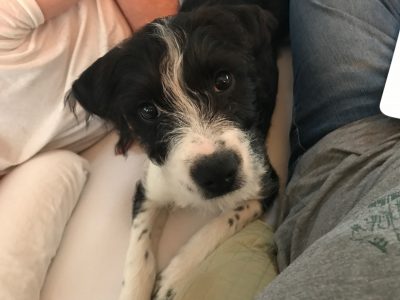So…practice.
You may have noticed that some things are easier to plan to practice than to actually, you know, practice. “I’ve blocked out time on my calendar every day this week to practice my speech!” Easy. “I practiced my presentation every day this week!” Hard.
About five weeks ago my family got a puppy—a real, licky, waggy, bitey, pee-on-your-rugs puppy. Her name is Ollie, and she is my brand-new love.
Yesterday, we had a session with a puppy trainer. What I didn’t fully realize when we decided to get a puppy was that it’s a lot like having a toddler—you can’t leave them alone, and they make their own rules. Having never had a puppy before, our approach to getting her to learn our rules had been pretty ad hoc.
The trainer (also named Angie, oddly enough) asked us a lot of questions, then laid out a precise practice plan to get the results we want, i.e. more of the behavior we love and none of the behavior we don’t. We were excited! A plan!
Within four hours of getting home from the visit with the trainer, we had a much clearer understanding of what this plan means. It means stopping what you’re doing every hour on the hour to take Ollie out. It means stopping what you’re doing to correct her behavior with a time-out, then stopping again to get her out of the time-out. It means having a constant mindset of practice—keeping the end goal in mind, while we all (not just the puppy) learn a new way of being.
Practice is disruptive. It’s easier and often more comfortable to do the thing you’ve always done. Practicing a new skill can feel like Sisyphus pushing the boulder up the mountain—you get almost there and have to start over. But unlike that doomed Greek man, your practice gets you a few steps closer to your goal every time, even if you can’t tell yet.
Not practicing? That’s going to get you a lot of chewed furniture and wet rugs.

